Video captioning
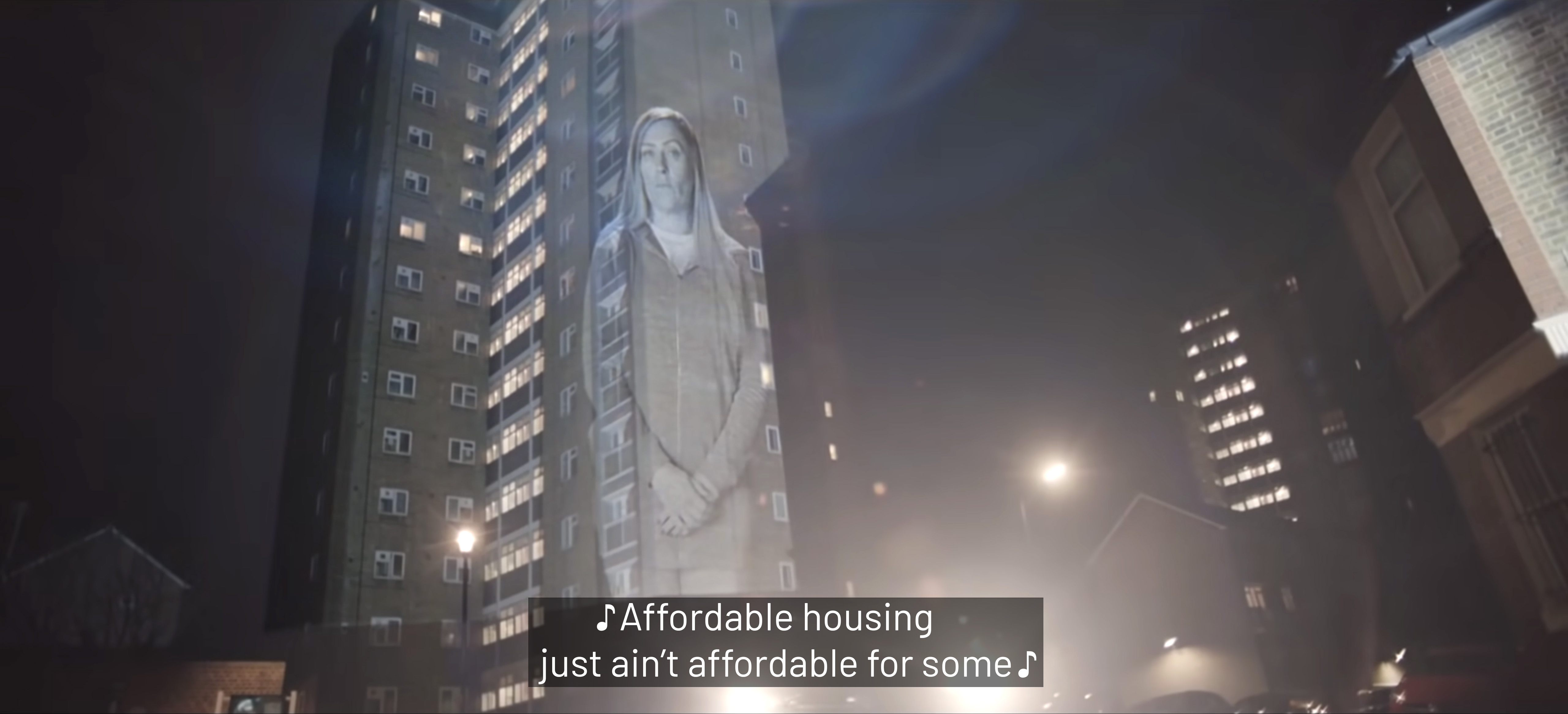
Video still from Fight for Home, Shelter’s brand campaign film
Shelter delivers equal access video for deaf and hard of hearing people through captions and subtitles. We use a format called Subtitles for the deaf and hard of hearing, known as SDH subtitles, which includes a visual soundtrack of relevant non-dialogue audio sound effects and speaker identification.
SDH subtitles mean that Shelter's video content is accessible to more than 11 million people in the UK who are deaf or hard of hearing.
Captions also increase viewership as they keep the audience engaged regardless of their access to audio. This is especially important in mobile video viewing environments where audio may be disruptive or inaccessible.
All video produced for Shelter’s channels should be delivered using the following guidelines.
Writing captions
The text should always be verbatim (written exactly as it's said), styled as the person speaks
Where possible, each caption should be self-contained within the clip it relates to
Audio descriptions should be fact-based
Once you've finished captioning your video, watch it back on mute to check that your captions convey the sound information equal to when you’re hearing it
Checklist
All captions should be center justified and placed at the bottom of the screen
Text should be limited to a maximum of 38 characters per line. You can check this using an online character counting tool
Maximum two lines of text per caption. If possible the bottom line should be longer so it doesn’t interfere with the image
Try to make each caption self-contained within the clip it relates to
If you have to let a caption hang over a shot change, do not remove it too soon after the cut (which can be jarring for the viewer)
Numbers between one and nine should be written in words. Information normally as figures such as telephone numbers, house numbers should be retained as figures. (Learn more about Shelter’s house style)
A specific time is written in standard form - 9:45am, 4:20pm etc. The passing of time is written in words - seven minutes, twelve days etc
Where the same word is repeated several times in a short space, don't caption all the repeats; For example, a rapid "No, no, no, no" is subtitled as "No, no"
Keep the use of exclamation marks to a minimum. Too many devalue the dialogue's impact
Multiple speakers
Each speaker should have one line, and each line should start with a hyphen, eg:
- How far away is the station?
- Do you see the tall building, it's just there
If the speakers are off-screen, with their first lines you should label their names in capitals followed by a colon (eg CLEM JONES: The leaves are starting to change colour). You don’t need to label their follow-on lines.
If you have multiple speakers off screen, use the colour yellow = #FFBC3D to distinguish another speaker.
Music
All music that is part of the action, or significant to the plot, should be indicated in some way. If it's part of the action, for example somebody playing an instrument or track, then write in upper case.
For music without lyrics: If the music doesn’t have a name, describe the music in capital letters with a musical note (♪) or octothorpe (#), inside square brackets:
[ ♪ BLUES HARMONICA ♪ ]
If the music’s name and artist are known, include both, using the format [ ♪TITLE OF MUSIC - ARTIST’S OR PERFORMER’S NAME♪]:
[ ♪ FIFTH SYMPHONY - BEETHOVEN ♪]For music with lyrics: Wrap relevant lyrics in musical notes (♪) to identify when the singing starts and ends, eg:
♪ Somewhere over the rainbow
Way up high ♪
Non-dialogue audio
All non-dialogue audio and sound effects relevant to the story should be included in the captions using CAPS inside square brackets. Describe sounds, not actions.
Sound-effect labels should be as brief as possible and should have the following structure:
subject + active, finite verb:
[A DOOR SLAMS]
Style specifications
These specifications for Adobe Premier Pro cover the three ratios most commonly used: 16:9, 1:1 and 9:16. These should easily translate to other applications such as Final Cut Pro.
For 1920 x 1080p, we use Barlow, Regular, size 60, colour white, stroke 3px
To avoid interference with on-screen activity, no background or ‘ghost box’ is required. See settings below if additional legibility is needed
All captions must stay within text safe areas
Ratio: 16:9
Font: Barlow
Style: Regular
Size: 60
Fill: White
Background: None
Stroke: 3.0
Shadow: None
Position (x/y): 960.0px / 945.0px
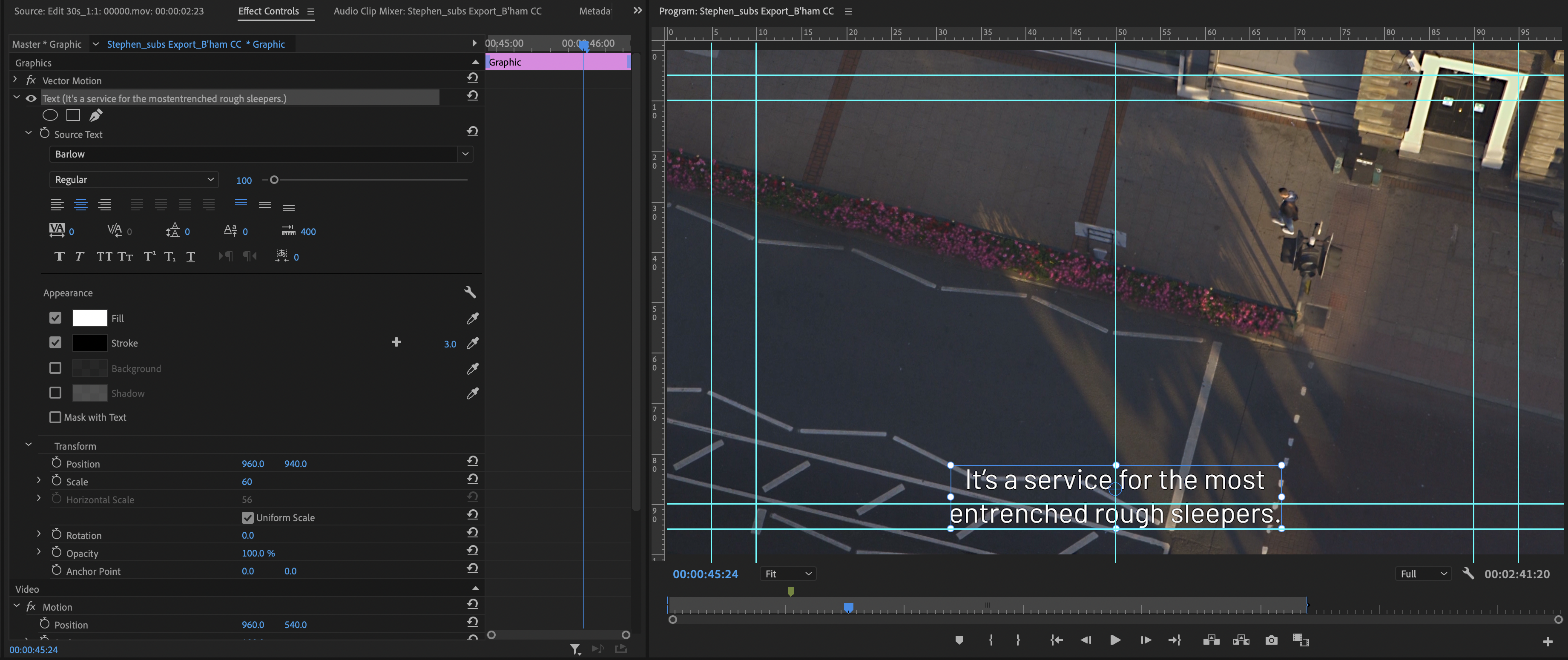
Ensure captions are within the title safe area, indicated here with the turquoise lines. [Menu>View>Guide templates>Safe margins]
Ratio: 1:1
Font, size and appearance as above.
Position (x/y): 540.0px / 945.0px
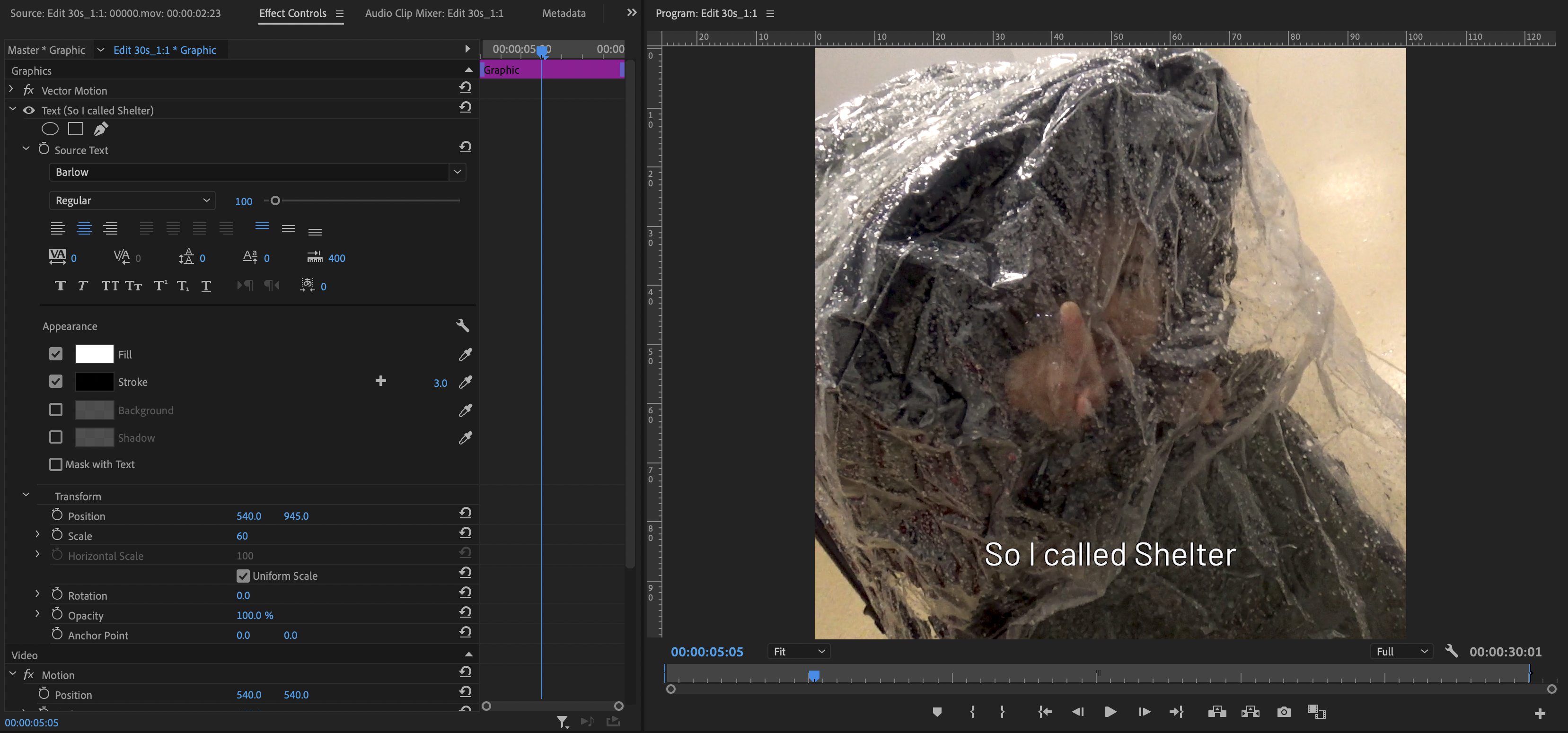
Ratio: 9:16
Font, size and appearance as above.
Position (x/y): 300.0px / 960.0px
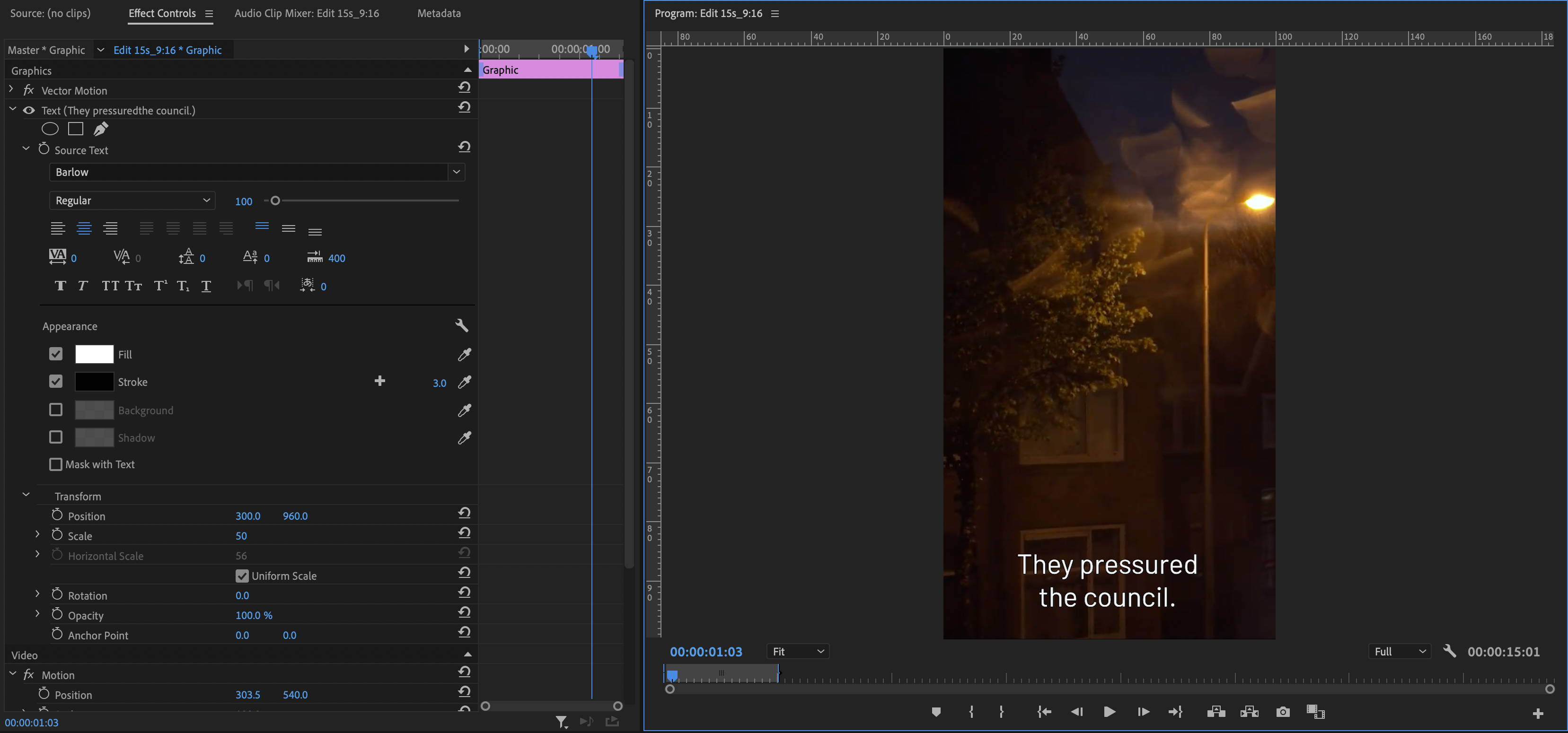
Captions for bright video
If you need to improve caption legibility, you can add a background or ‘ghost box’. This should be applied to all subtitles in the video. Please follow these settings.
Ratio: 16:9
Background opacity: 75%
Background size: 10.0
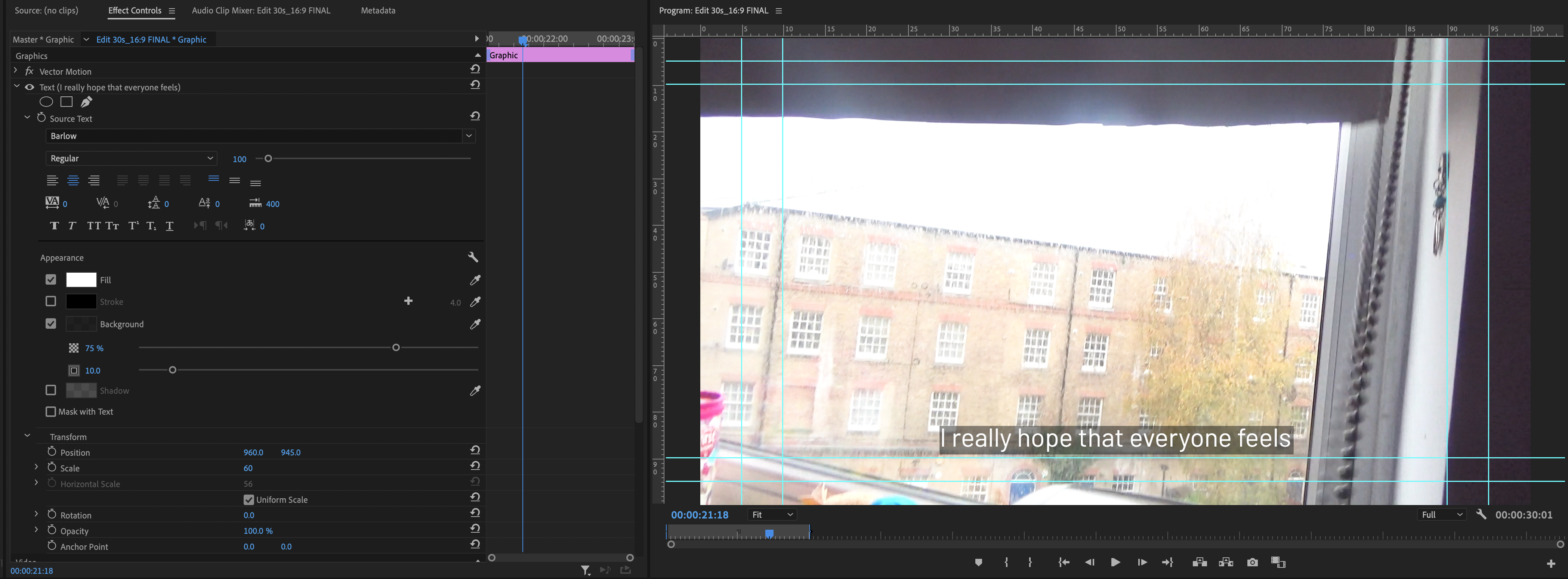
Automatically generated captions
Platforms such as YouTube and Instagram provide an automatic caption function for video content and live-stream video. But we discourage their use - these are generated by machine-learning algorithms, so the quality of the captions may vary and it's necessary to always review them for accuracy.
Learn how to add subtitles using YouTube's subtitles and caption guide.
Other resources
https://www.w3.org/WAI/media/av/captions/
Other video guides
Related
Read our other content guides
Read our brand guidelines
Contact us
Have a question or comment? Found a bug? Or maybe you’d like to contribute to the framework? Use our contact form to get in touch.
